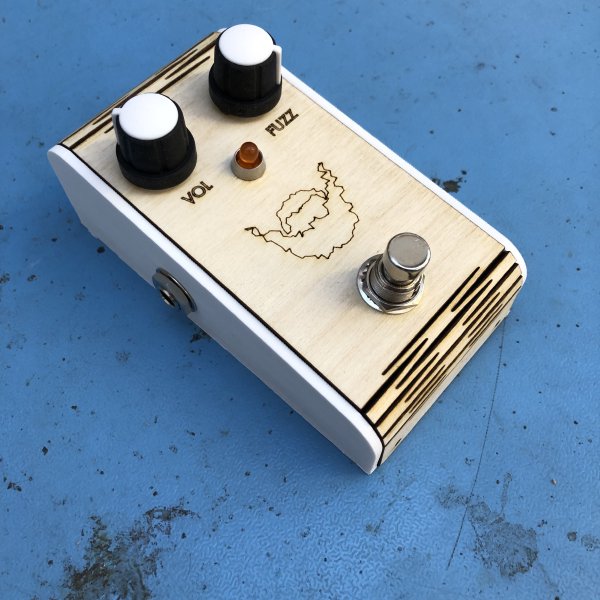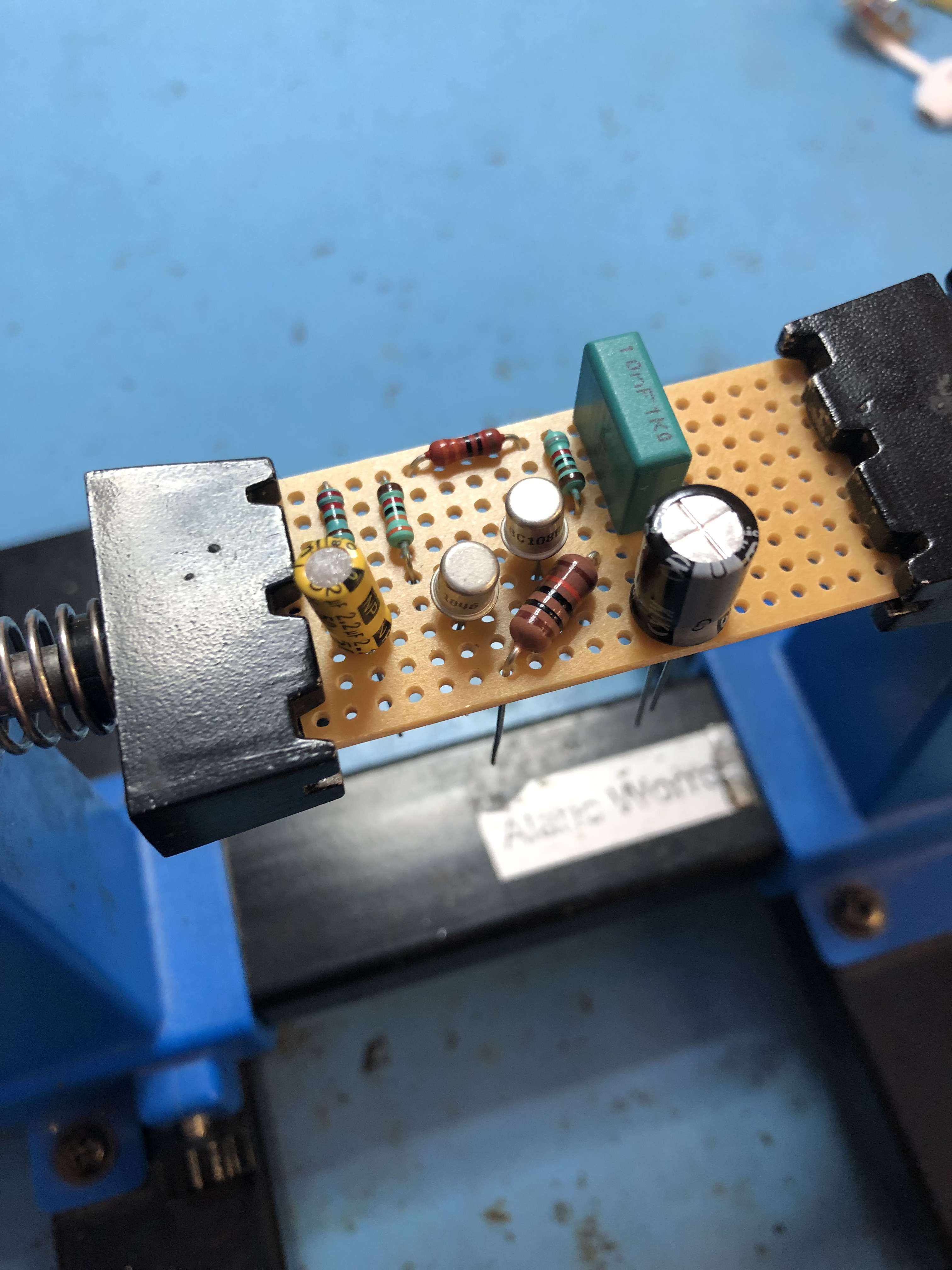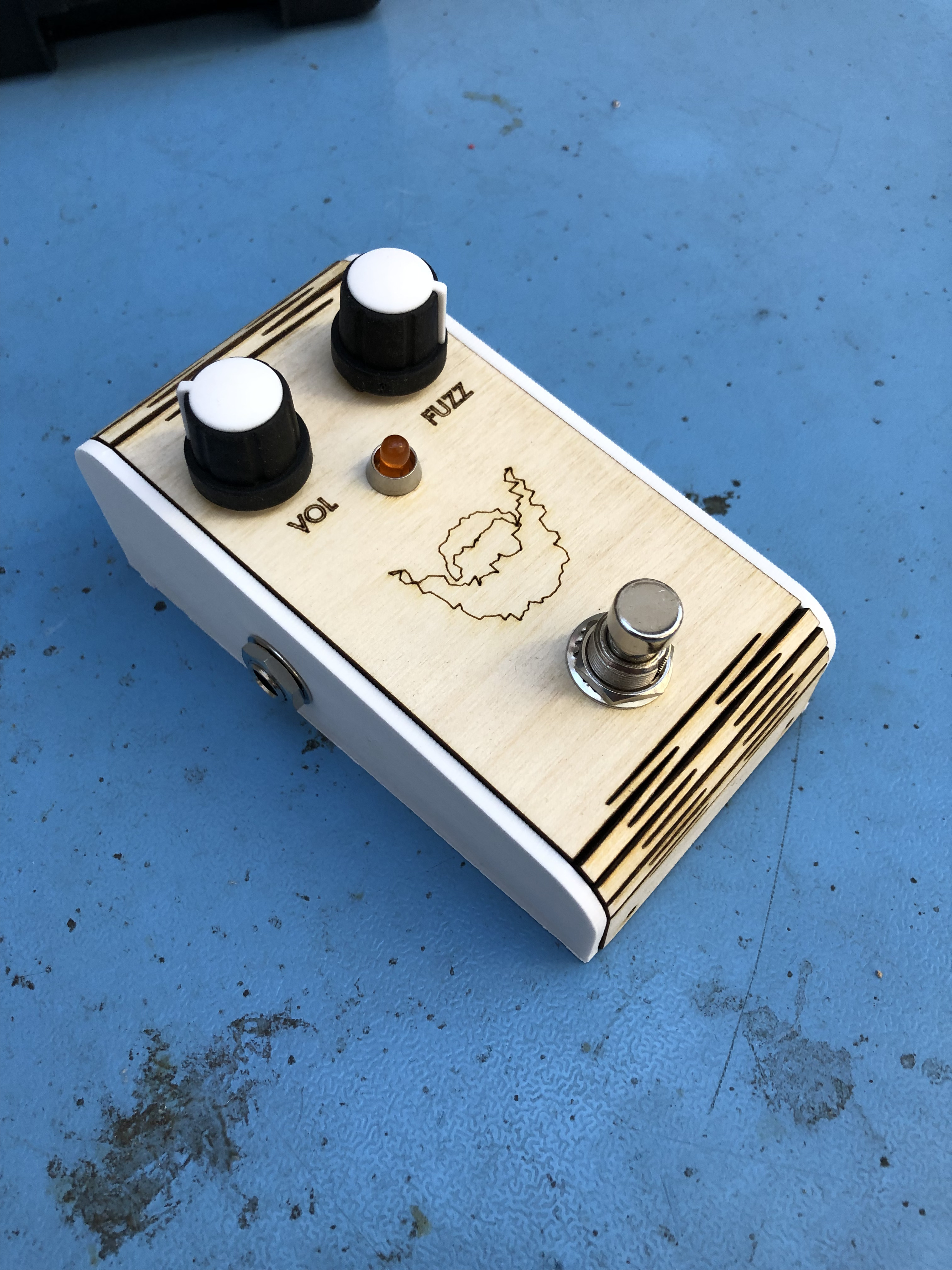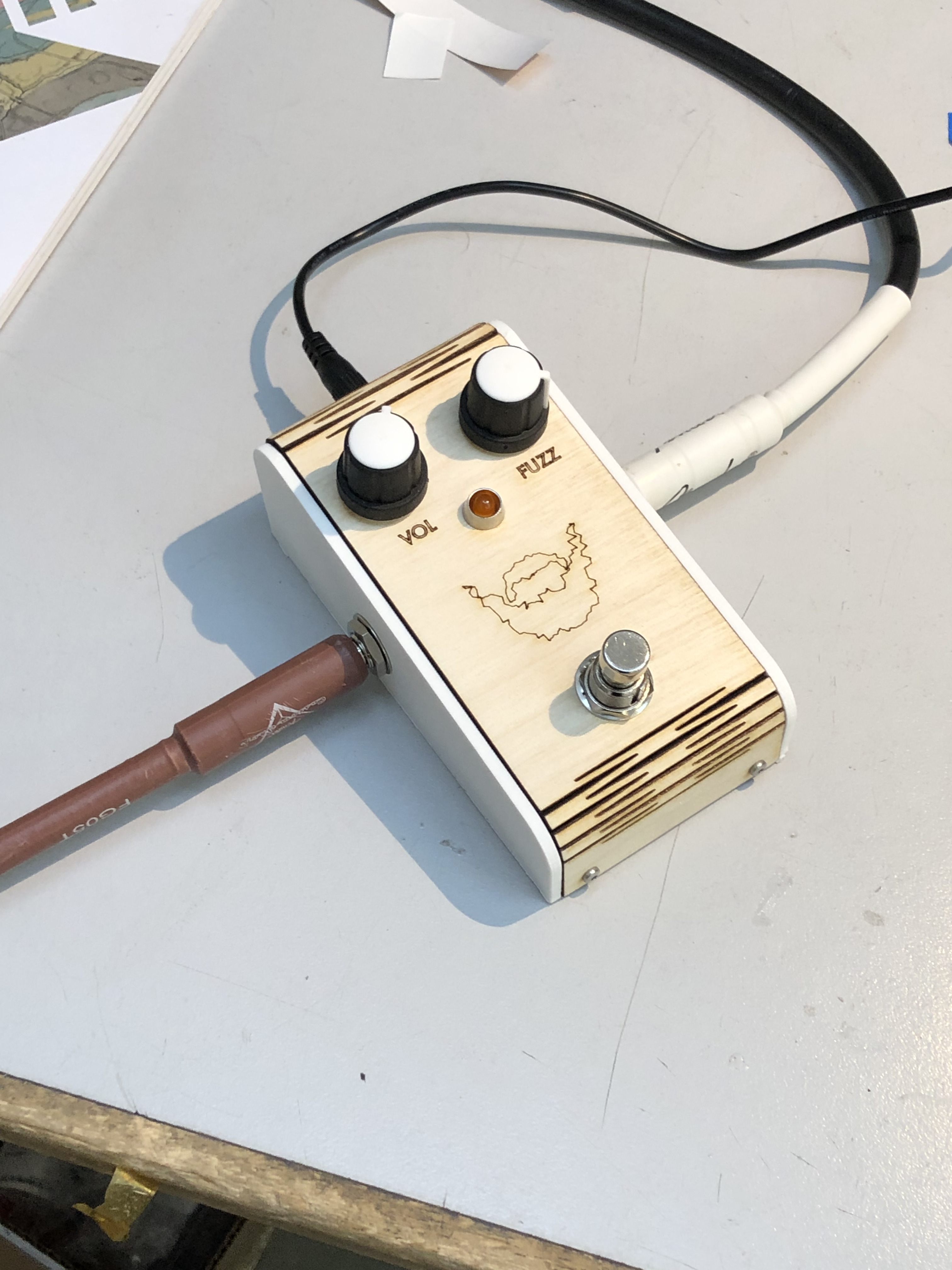Part of what I love about electric guitars is their deeply analog nature, with the tone of a saturated amp being an iconic sound, and how a skilled played can manipulate the output of the guitar to be either side of that threshold. In a similar nature, the classic fuzz pedal has a similar appeal, just turning the results up to eleven. If you play a fuzz quite, it’ll clean up nicely, but push it at all and you’re into a wonderful world of crazy distorted sounds.
Thus when I wanted to play with a fuzz for the first time, it seemed natural I’d make my own :)
This was not just learning about another part of the sound though, it was also a way to play with new construction techniques, using a 3D-printed lower shell and a single laser-cut wooden upper.
You can hear the results here:
In total I made 5 of these and shipped them to friends and clients for testing.



